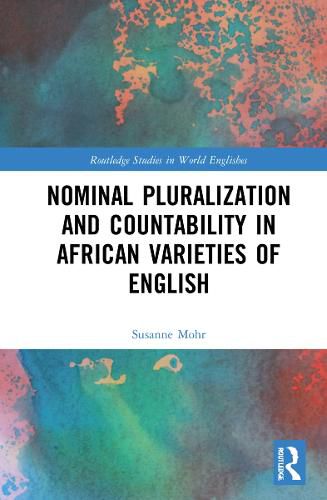Readings Newsletter
Become a Readings Member to make your shopping experience even easier.
Sign in or sign up for free!
You’re not far away from qualifying for FREE standard shipping within Australia
You’ve qualified for FREE standard shipping within Australia
The cart is loading…






This book is the first comprehensive analysis of nominal plural marking, its morphosyntax and semantics, across different African varieties of English. Mohr explores the rich diversity in the varieties and how different conceptualizations of the number category are realized across different cultures.
The investigation of unstandardized noun plurals in Kenyan, Tanzanian, Ghanaian and Nigerian Englishes is based on a mixed methods design drawing on corpus linguistics, acceptability questionnaires and psycholinguistic experiments. In this vein, the book not only contributes to the description of each of these four varieties, but also sheds light on standardization processes and language change in New Englishes. Importantly, it is a plea for the triangulation of data and mixed methods approaches in World Englishes research, as the combination of these methods grants insight into unforeseen areas of language structures and use.
This volume is a useful reference work for students and researchers in World Englishes, varieties of English and African Studies, as well as those interested in linguistic anthropology.
$9.00 standard shipping within Australia
FREE standard shipping within Australia for orders over $100.00
Express & International shipping calculated at checkout
This book is the first comprehensive analysis of nominal plural marking, its morphosyntax and semantics, across different African varieties of English. Mohr explores the rich diversity in the varieties and how different conceptualizations of the number category are realized across different cultures.
The investigation of unstandardized noun plurals in Kenyan, Tanzanian, Ghanaian and Nigerian Englishes is based on a mixed methods design drawing on corpus linguistics, acceptability questionnaires and psycholinguistic experiments. In this vein, the book not only contributes to the description of each of these four varieties, but also sheds light on standardization processes and language change in New Englishes. Importantly, it is a plea for the triangulation of data and mixed methods approaches in World Englishes research, as the combination of these methods grants insight into unforeseen areas of language structures and use.
This volume is a useful reference work for students and researchers in World Englishes, varieties of English and African Studies, as well as those interested in linguistic anthropology.